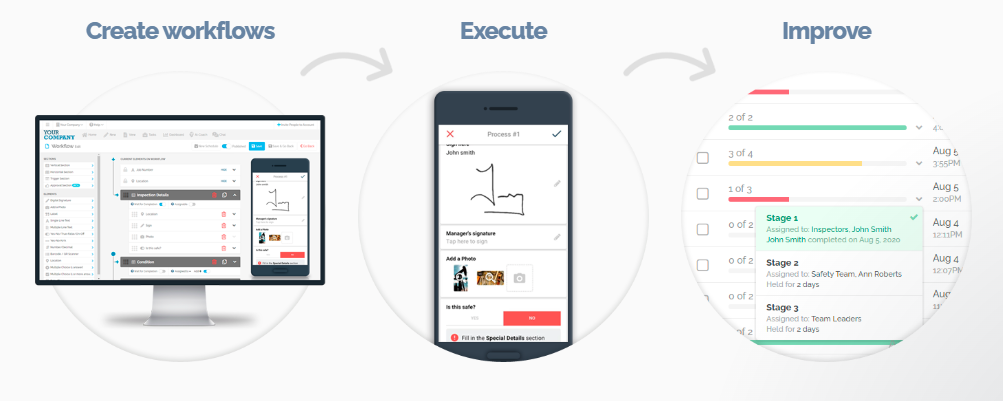As the world of manufacturing continues to evolve, the importance of predictive maintenance has become increasingly apparent. This proactive approach to maintenance, powered by data and technology, is transforming the way facilities operate. One of the leading platforms in this field is FAT FINGER, a digital workflow procedure builder that empowers front-line teams to do their work correctly every time.
With features like a drag & drop workflow builder, mobile & desktop workflows, dashboards, integrations, augmented reality, IoT device connectivity, and artificial intelligence coaching, FAT FINGER allows you to build predictive maintenance digital workflows that ensure problems are gone even before they start. In this article, we will delve into the three pillars of predictive maintenance and how they can be leveraged to optimize your operations.
1. Data Collection
The first pillar of predictive maintenance is data collection. This involves gathering information from various components within a facility. The data collected can include anything from temperature readings to vibration levels, and it is this data that forms the basis for predictive maintenance strategies. FAT FINGER’s IoT device connectivity feature allows for seamless data collection from various devices, ensuring that you have all the necessary information at your fingertips.
2. Data Analysis
Once the data has been collected, the next step is to analyze it. This is where the power of predictive maintenance truly comes into play. By using advanced algorithms or artificial intelligence, FAT FINGER can analyze the collected data and accurately predict when maintenance needs to be carried out. This not only saves time and money but also improves efficiency within the facility.
3. Maintenance Execution
The final pillar of predictive maintenance is the execution of the maintenance tasks. Once the data has been analyzed and a maintenance schedule has been determined, the necessary tasks need to be carried out. FAT FINGER’s digital workflow builder allows you to create detailed maintenance procedures that can be followed by your team, ensuring that all tasks are carried out correctly and efficiently.

The Benefits of Predictive Maintenance
Predictive maintenance offers a host of benefits for manufacturing facilities. These include:
- Reduced downtime: By predicting when maintenance is needed, you can schedule it during non-peak hours, reducing downtime and increasing productivity.
- Cost savings: Predictive maintenance can help to identify potential issues before they become major problems, saving on costly repairs and replacements.
- Improved safety: Regular maintenance can help to ensure that all equipment is operating safely, reducing the risk of accidents and injuries.
Conclusion
In conclusion, predictive maintenance, powered by platforms like FAT FINGER, is revolutionizing the way facilities operate. By leveraging the three pillars of predictive maintenance – data collection, data analysis, and maintenance execution – you can optimize your operations, save time and money, and improve safety within your facility.
Ready to take the next step? Create a predictive maintenance workflow for free on FAT FINGER or schedule a demo today to see how FAT FINGER can transform your maintenance procedures.
Discover the power of predictive maintenance and its three pillars. Learn how it can revolutionize your business operations, reduce costs, and increase efficiency. Don’t wait, Schedule a Demo today to see it in action.


